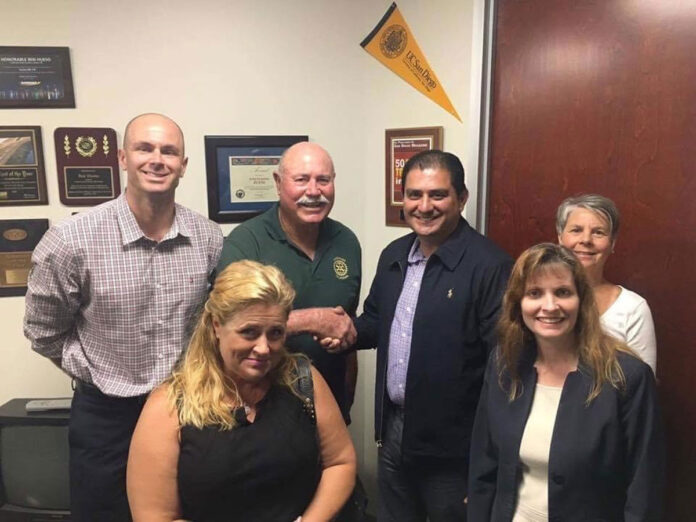
Although official figures have not been maintained since the opening of the San Diego-Coronado Bay Bridge in 1969, according to The California Department of Transportation approximately 400 deaths by suicide have occurred from the Bridge on State Route 75. After the Golden Gate Bridge, it is recognized as the second most frequently used bridge for suicide in the state. In early 2019, the addition of four-inch spikes were installed on top of the bridge as an interim suicide deterrence measure. But this has not been enough to stop people from committing suicide by jumping off the bridge and Wayne Strickland, administrator for the Coronado-SD Bridge Suicide Prevention Page on Facebook said that it is not enough.
A retired Coronado firefighter, Strickland said he saw many suicides off the bridge.
“Coronado used to have a police boat, but the harbor police used to take them over to the boat ramp when they picked somebody up,” he said. “I would do CPR on these people that jump. Their bodies would be broken all over, and I never saved any of them.”
Strickland became involved in the prevention group eight years ago and said now there is about 500 deaths by suicide on the bridge.
“It is a group that really wants to see something done,” he said.
Strickland said he met with Daniel Kennedy, who directed a short film
“Living Through It,” a documentary of suicide prevention and support of survivors of suicide loss. He also spoke to Bertha Loaiza, whose mother took her in her arms and jumped off the 246-tall bridge when Loaiza was 3 years old. She is the first person to have gone over the bridge and survived.
Stephen Bouchard survived a suicide attempt in 1987, falling 240 feet, and is one of the few people who have ever survived the fall.
Strickland said he took Loaiza, Bouchard, and Coronado Mayor Richard Bailey to speak with state Sen. Ben Hueso, 40th District, who wrote Senate Bill 656, a bill that requires the Director of Transportation to select members for and advisory committee to provide input into the selection of a physical suicide deterrent system for the San Diego-Coronado Bridge approved by the governor in October 2019.
“That has been very helpful, but it is very slow,” said Strickland, adding that Caltrans is working on money to get another barrier up.
According to Caltrans, fatalities caused by suicide do not qualify under the current Highway Safety Improvement Program criteria, so suicide deterrent projects are not eligible for HSIP funding. The project proposes to install a physical suicide deterrent on the Bridge in San Diego County. The project also proposes to install minor improvements to the Transportation Management System (TMS) elements at the Glorietta Toll Plaza, the Bridge, and the Interstate 5/State Route 75 Interchange.
Strickland said there is no way of knowing if the spikes are detouring suicides, but before they were installed, people thinking of suicide would stand or sit on the wall and sometimes they would get rescued.
“Now with these bird spikes, they cannot sit or stand. They just go and jump immediately,” he said. “Now there is no chance in saving them. There is just an empty car. Nowadays, it is going on as much as ever, even more. There are about 18 every year. It is not slowing down and the spikes have not done anything. The barrier is only 34 inches high, and the spikes are only four inches high, so that is 38 inches, and it is easily jumped over.”
Strickland said the current project is a vertical cantilevered net but is waiting for funding for this project. In February, according to the Los Angeles Times, the net would be 8 to 10 feet tall, attached by cables to poles bracketed into the bridge’s 34-inch tall concrete sidewalls, with an estimated $140 million, which funding is the significant hurdle in getting this project underway.
Strickland said the Facebook page has really helped in getting people’s attention, and it has attracted people of influence to join the group. Strickland said he is talking with public officials and Caltrans in hopes to get this project completed.
“With how slow it is, people are still dying,” he said. “Every bridge you see over a freeway, there is definitely a fence to keep pedestrians from jumping and hitting traffic. They will get this done but how much longer are we going to have to wait? How many more lives have to be lost?”
To join the Facebook group, visit https://www.facebook.com/groups/2111694068936163.
If you are contemplating suicide or someone you know is thinking about suicide, call the San Diego Access and Crisis Line at (888) 724-7240. Call or chat at 988, the designated three-digit dialing code that routes callers to the National Suicide Prevention Lifeline.














